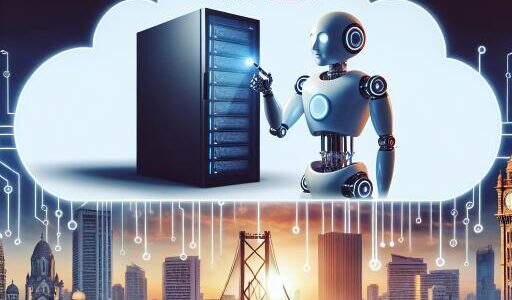The 2025 ERP Implementation Playbook
As we progress through 2025, Enterprise Resource Planning (ERP) systems have transcended their traditional roles of managing financials or inventory. They have evolved into sophisticated, AI-powered platforms that integrate the entire business infrastructure, including finance, operations, human resources, and supply chain management. Today, ERP systems form the backbone of an organization’s technological ecosystem, driving businesses towards being more data-driven, agile, and efficient.
With this evolution comes a significant shift from traditional on-premise ERP systems to cloud-based solutions. As companies strive to future-proof their operations, transitioning to cloud ERP has become a pivotal component of digital transformation. Industry experts predict that the global market for cloud-based ERP solutions will continue to expand rapidly, propelled by the demand for scalability, flexibility, and emergent technologies such as AI and machine learning.
This guide details the key strategies for effective ERP implementation in 2025 and beyond, underscoring the essential considerations for businesses navigating the intricacies of modern ERP deployments.
Strategizing the Implementation
The initial step in any ERP implementation is defining the requirements, but replicating existing workflows is no longer adequate. In 2025, successful ERP systems are those that foster real-time innovation and adaptation. Companies are encouraged to focus not merely on duplicating current processes but on unveiling opportunities for growth, efficiency, and new capabilities.
For instance, ERP systems must accommodate real-time global financial consolidation, especially as companies expand internationally. This means compliance with global reporting standards such as IFRS, which are ever-evolving, is crucial. Automated compliance helps mitigate financial risks.
Also, supply chains have become increasingly complex and interdependent. Modern ERP systems must integrate with technologies like blockchain to guarantee transparency and traceability throughout the supply chain. This visibility empowers businesses to optimize operations, reduce fraud, and improve supplier relationships.
The need for real-time data access and decision-making capabilities will become more crucial. Organizations must articulate their requirements not only for current operations but also for future business needs, ensuring their ERP systems can scale and adapt to new business models and technologies.
Embracing AI and Automation
AI and automation have reshaped various industries, and ERP systems are no exception. AI is fast becoming an essential element of modern ERP solutions. Incorporating AI into ERP systems enhances operational efficiency, predictive analytics, and decision-making.
By deploying predictive analytics, businesses can anticipate future trends such as customer demand and inventory levels. For example, ERP systems equipped with AI capabilities can enable manufacturers to predict machine failures based on historical data, facilitating preventive maintenance that reduces downtime and repair costs.
Beyond simple automation, ERP systems will embrace advanced AI functions like prescriptive recommendations. These capabilities will analyze historical and real-time data to deliver actionable insights, aiding business leaders in decision-making. For example, ERP systems could suggest optimal pricing strategies based on real-time market conditions and competitor activity.
The potential for autonomous decision-making in ERP systems, where decisions are made without human intervention, albeit in its nascent stages, offers enormous prospects for enhancing business efficiency and responsiveness.
Navigating Costs and Strategic Cloud Integration
While cloud ERP systems can yield significant capital savings, many organizations discover that their operational costs can be unpredictable. Subscription-based pricing models minimize upfront costs, but hidden expenses frequently surface during the implementation phase.
For instance, data migration can be a considerable cost, particularly when transitioning from legacy systems. The data cleansing process to ensure accuracy and consistency can be time-consuming and costly, potentially running into thousands of dollars for mid-sized organizations.
Training is a critical cost factor. While ERP vendors typically offer training during implementation, companies often underestimate the ongoing need for employee training as new features are added. Ensuring that staff are proficient in new system capabilities, especially concerning AI and automation, is vital for maximizing ERP ROI.
Other commonly overlooked expenses include change management initiatives to smooth employee and stakeholder transitions. ERP implementations often entail significant workflow adjustments, requiring investments in training programs, communication strategies, and support systems for a successful transition.
As cloud adoption increases, organizations must carefully evaluate their cloud architecture when implementing ERP systems. In 2025, numerous companies are shifting towards hybrid or multi-cloud environments. The flexibility of a multi-cloud strategy allows businesses to utilize the strengths of various providers, preventing dependency on a single cloud vendor.
A key advantage of multi-cloud environments is the potential to optimize performance, costs, and risk management. For example, businesses might host critical workloads or sensitive data on a private cloud for added security, while less-sensitive applications run on public clouds, offering cost efficiency and scalability.
One emerging trend in cloud architecture is the integration of edge computing, where data is processed closer to its source (e.g., IoT devices, sensors, manufacturing equipment) rather than a centralized data center. This reduces latency, enhances response times, and enables faster, more informed decision-making.
To fully harness these benefits, organizations should ensure their ERP systems integrate smoothly with cloud and edge technologies. AI-driven orchestration will be pivotal, dynamically adjusting workloads based on cost, performance, and real-time processing needs.
Prioritizing Security and Compliance
As the threat landscape targeting ERP systems grows, businesses must emphasize security. The ramifications of data breaches, including financial losses, reputational damage, and legal consequences, are too significant to overlook.
To counter these threats, businesses should embed advanced security features within their ERP systems. Behavioral biometrics, authenticating users based on behavior instead of just passwords, will soon become standard, offering more reliable and real-time authentication.
Moreover, AI-powered anomaly detection systems will be crucial in spotting suspicious activities in real time. These systems can identify unusual patterns, like unauthorized access attempts or data tampering attempts, alerting administrators before an issue escalates.
In terms of compliance, staying ahead is imperative. As regulations like GDPR and ISO 27001 tighten, companies must ensure transparent data management practices. ERP systems should track and report data handling processes, ensuring compliance with evolving legal requirements.
Preparing for Workplace Evolution and Sustainability
Future-proofing ERP systems requires adaptability to technological advancements and workforce changes. Composable architectures allow businesses to add or replace ERP components without overhauling the entire platform, providing flexibility to evolve systems over time without costly re-implementations.
Sustainability is another critical consideration for future ERP systems. As global regulations on environmental reporting tighten, ERP solutions must track sustainability metrics throughout the supply chain, including monitoring carbon footprints and resource usage, aiding compliance while enhancing environmental impact.
As we advance, workforce evolution demands ERP systems support changing work dynamics. As more companies adopt hybrid and remote work models, ERP systems must facilitate collaboration across dispersed teams and integrate with AR/VR and AI-mediated communication tools.
In conclusion, the successful implementation of ERP systems in 2025 hinges on adaptability, advanced technologies like AI, strategic cloud integration, robust security, and sustainability. These elements will ensure businesses remain at the forefront of innovation, agility, and efficiency in an increasingly complex business landscape.








